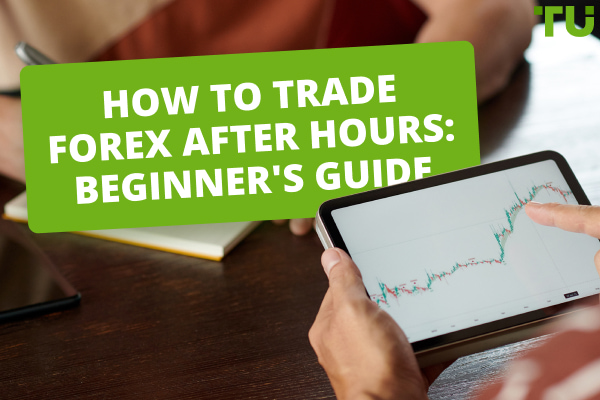What Are The Main Types Of Currency Pairs
The main currency pairs in Forex are:
-
Majors currency pairs are the most liquid currency pairs
-
Cross rates are those that do not include the US dollar
-
Exotic currency pairs are those that are traded against the US dollar
In Forex, currency pairs are divided into three groups. "Majors" - 7 currency pairs that have high liquidity and the highest trading volume. "Cross-courses" - pairs of the most liquid currencies without USD. "Exotics" - currencies of developing countries characterized by high spreads, low liquidity, slippages. The first two types are more suitable for beginners because of high liquidity and quick access to fundamental information. Exotic pairs are suitable for professional long-term strategies
The main types of currency pairs
The foreign exchange (Forex) market is a dynamic arena where traders engage in the buying and selling of currencies. The foundation of Forex trading lies in currency pairs, where the value of one currency is measured against another. Understanding the different types of currency pairs is fundamental for any trader navigating this complex market.
There are three main types of currency pairs: majors, crosses, and exotics.
Major currency pairs
Major currency pairs are the most liquid currency pairs, meaning that they are traded with the largest volume. They also have the tightest spreads, meaning that the difference between the bid and ask price is minimal. The seven major currency pairs are:
-
EUR/USD (Euro/US dollar)
-
USD/JPY (US dollar/Japanese yen)
-
GBP/USD (British pound/US dollar)
-
USD/CHF (US dollar/Swiss franc)
-
AUD/USD (Australian dollar/US dollar)
-
USD/CAD (US dollar/Canadian dollar)
-
NZD/USD (New Zealand dollar/US dollar)
Cross currency pairs
Cross currency pairs are those that do not include the US dollar. They are typically less liquid than the major currency pairs, and they have wider spreads. Some examples of cross currency pairs include:
Exotic currency pairs
are those that are traded against the US dollar, but they are not as liquid as the major currency pairs. They have wider spreads than the major currency pairs, and they are more volatile. Some examples of exotic currency pairs include:
-
USD/MXN (US dollar/Mexican peso)
-
USD/TRY (US dollar/Turkish lira)
-
USD/ZAR (US dollar/South African rand)
-
USD/RUB (US dollar/Russian ruble)
-
USD/INR (US dollar/Indian rupee)
Best Forex brokers

How to choose a type of currency pair
The choice of currency pair type depends on several factors, including your trading goals, level of experience, and risk appetite.
If you are a beginner trader, you should start with majors. They have high liquidity and tight spreads, making them easier to trade.
If you want to diversify your portfolio or gain exposure to emerging markets, you can consider crosses or exotics. However, it is important to understand that these types of currency pairs can be more risky than majors.
In addition to the three main types of currency pairs, there are a few other factors to consider when choosing a currency pair to trade. These include:
-
Correlation. Currency pairs can be correlated, meaning that their prices move in similar directions. This can be a good or bad thing, depending on your trading strategy.
-
Volatility. Currency pairs can be volatile, meaning that their prices can fluctuate wildly. This can be a good thing for traders who are looking to make quick profits, but it can also be risky.
-
Economic factors. Economic factors, such as interest rates, inflation, and GDP growth, can affect the value of currencies. It is important to understand these factors when making trading decisions.
By considering these factors, you can make an informed decision about the type of currency pair that is right for you. If you are wondering what are the cheapest Forex pairs to trade, read the Traders Union article.
Strategy options for different types of currency pairs
-
1
Majors
Majors are the most liquid currency pairs, so they are suitable for a wide range of trading strategies. Some of the most popular strategies for the Majors include:
-
Trend trading. This strategy is based on the fact that prices move in a specific direction, called a trend. Traders using trend trading try to determine the direction of the trend and open a position according to it.
-
Volatility trading. This strategy is based on the fact that the prices of currency pairs are more volatile during certain periods of time. Volatility traders try to identify these time periods and open a position according to them.
-
Scalping. This strategy is based on opening and closing positions within a short period of time, usually a few minutes or hours. Scalpers try to make a small profit on each trade by opening a large number of trades.
-
-
2
Crosses
Crosses are less liquid than majors, so they are suitable for more conservative trading strategies. Some of the most popular strategies for crosses include:
-
Day trading. This strategy is based on opening and closing positions within one trading day. Day traders use technical indicators to analyze prices and make trading decisions.
-
Trend Trading. This strategy is also suitable for crosses, but it requires more careful analysis than for majors. Crosses often move in the direction of a trend, but they can also be more volatile, making it difficult to determine the direction of the trend.
-
-
3
Exotics
Exotic currency pairs are the most risky, so they are suitable for experienced traders who are willing to take increased risk. Some of the most popular strategies for exotics include:
-
Scalping. Scalping is the most popular strategy for exotics. This is because exotic currency pairs often have high volatility, allowing traders to make small profits on each trade.
-
Day Trading. Day trading can also be effective for exotics. However, traders should exercise caution as exotic currency pairs can be more volatile than majors or crosses.
-
Ultimately, the choice of trading strategy depends on the trader's individual goals, experience and risk appetite.
Conclusion
In the dynamic realm of Forex trading, an understanding of the various types of currency pairs is paramount for traders seeking success in the global markets. Major currency pairs, such as EUR/USD and USD/JPY, dominate the trading landscape, providing ample liquidity and reflecting the economic powerhouses of the world. These pairs are the staple for many traders, offering both stability and volatility, essential for diversified trading strategies.
Moving beyond the majors, traders explore minor and exotic currency pairs, each presenting unique opportunities and challenges. Minor pairs, devoid of the US Dollar, allow traders to delve into cross-currency dynamics, providing exposure to specific regional economies. On the other hand, exotic pairs introduce an element of risk and adventure, involving major currencies with those of smaller or emerging economies. Successful navigation of these pairs demands a nuanced understanding of geopolitical factors, economic conditions, and market sentiments.
Ultimately, proficiency in handling various currency pairs empowers traders to craft strategies aligned with their risk tolerance, market preferences, and financial goals. Whether engaging in the liquidity of major pairs, the diversity of minors, or the potential high returns of exotics, traders equipped with knowledge about currency pairs can confidently navigate the complexities of the Forex market.
Team that worked on the article
Alex Smith is a professional day trader for a proprietary trading firm within the foreign exchange (forex) and crypto markets. His area of expertise is day trading and swing trading within the 15min-4hr time frames for both the London and NY open. At Traders Union, Alex is a firsthand experience expert, providing explanatory videos and tutorials on brokerage companies, how to open a trading account, how to withdraw profit, etc.
Dr. BJ Johnson is a PhD in English Language and an editor with over 15 years of experience. He earned his degree in English Language in the U.S and the UK. In 2020, Dr. Johnson joined the Traders Union team. Since then, he has created over 100 exclusive articles and edited over 300 articles of other authors.
The topics he covers include trading signals, cryptocurrencies, Forex brokers, stock brokers, expert advisors, binary options. He has also worked on the ratings of brokers and many other materials.
Dr. BJ Johnson’s motto: It always seems impossible until it’s done. You can do it.
Mirjan Hipolito is a journalist and news editor at Traders Union. She is an expert crypto writer with five years of experience in the financial markets. Her specialties are daily market news, price predictions, and Initial Coin Offerings (ICO). Mirjan is a cryptocurrency and stock trader. This deep understanding of the finance sector allows her to create informative and engaging content that helps readers easily navigate the complexities of the crypto world.










